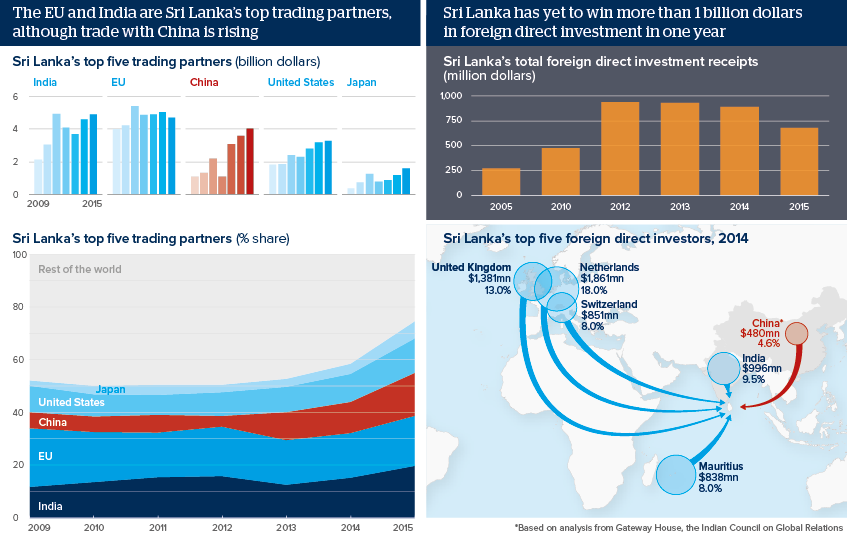Sri Lanka’s economic reality needs balanced diplomacy
Sri Lanka is central to China’s plans to develop its maritime trade and military infrastructure in the Indian Ocean
Source: Gateway House (Indian Council on Global Relations), UNCTAD and 2016 World Investment Report; IMF Direction of Trade Statistics; and UN Comtrade database
Outlook
China plans to invest about 5 billion dollars in Sri Lanka over the next five years -- more than the total foreign capital invested in the country over the previous five years. Recognising the transformative potential of this investment, especially for infrastructure on the strategically located island, Colombo will be prepared to face down a significant amount of popular resistance to high-profile Chinese-financed projects such as the Hambantota port and industrial zone.
However, Colombo will avoid overreliance on Chinese investment, not least to avert further violent anti-China protests. India and European countries are long-standing investors in Sri Lanka as well its top trading partners. Colombo will not wish to alienate such important economic allies.
Impacts
- Potential corruption in Chinese-backed projects will fuel public resistance, testing Colombo’s China-friendly posture.
- Europe’s economic and technological heft will maintain pressure on Sri Lanka to advance post-war reconciliation efforts.
- However, progress on ethnic reconciliation will disappoint, Colombo preferring to keep Sinhala nationalist voters on side.
- Colombo will be particularly reluctant to allow China to develop a de facto naval presence in Sri Lanka.
See also
- Port deal with China may not ease Sri Lanka’s debt - Sep 18, 2017
- Stability and risk-aversion mark Sri Lanka's outlook - Sep 9, 2016
- More graphic analysis
